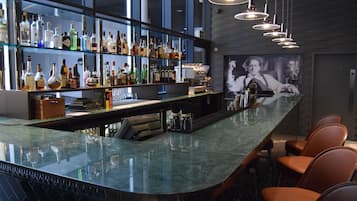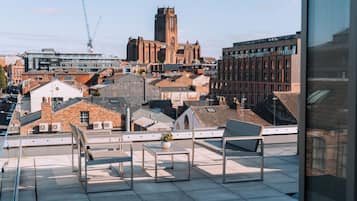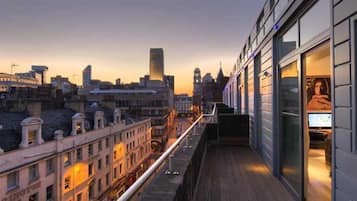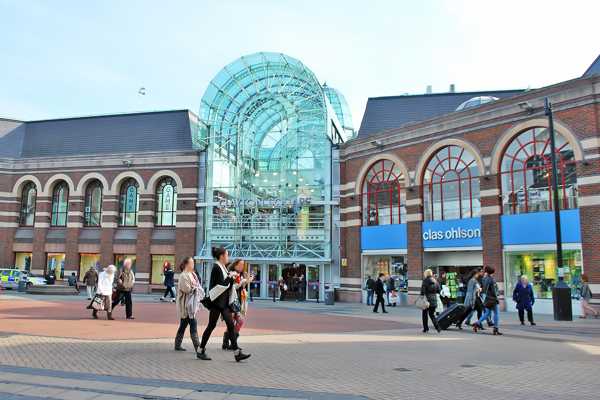The coastal city of Liverpool is packed full of exciting things to do for just about everyone. In fact, there's so much diversity that the city has been referred to as 'The Whole World in One City'. While there are numerous popular landmarks you can visit, Liverpool is also home to several obscure sites that may be more interesting than your standard tour.
Visiting these oddities can create a truly unique Liverpool experience that you'll never forget. Learn more about the best things to do in Liverpool off the beaten track with our list below.
- 1
Archer Stone
Check out the prehistoric sandstone menhir
- História
Leia maisThe Archer Stone is a legendary sandstone menhir that features deep grooves from which it earned its name. Also known as Robin Hood's Stone, it was once believed that the stone was used in medieval times for sharpening arrowheads as the field next to it was used for archery practice.
The grooves on the sandstone are likely to have occurred naturally, but the name Archer Stone remains to this day. There are, however, other markings on the stone that could date all the way back to the early Bronze Age as they're similar to the stone markings found in Calderstones Park.
Localização: 40 Archerfield Road, Liverpool L18 7HT, UK
Mapafoto de Rodhullandemu (CC BY-SA 4.0) modificada
- 2
William MacKenzie's Tomb
Visit the pyramid tomb of a legendary gambler
- História
Leia maisWilliam MacKenzie's Tomb stands out from others as it's marked with a 4.5-metre-tall pyramid instead of a standard tombstone. According to folklore, MacKenzie was a gambler who wished to be entombed within a pyramid rather than beneath the ground so he could sit a table holding a winning hand of cards forever.
Some claims also suggest that MacKenzie believed that being buried above ground would stop Satan from claiming his soul. These stories have led to urban legends that speak of visitors seeing his ghost wandering around the grave.
Localização: 5-7 Rodney Street, Liverpool L1 9ED, UK
Mapafoto de Rodhullandemu (CC BY-SA 3.0) modificada
- 3
Penelope Sculpture
Marvel at an industrial art installation
- Viagens alternativas
Leia maisWhen you visit the Ropewalks district of Liverpool, you'll come across the Penelope Sculpture, a collection of metal stalks coloured in vibrant yellows and oranges with large spherical orbs at their ends. This art installation was created by Jorge Pardo during the UK's largest art festival in 2006.
It intends to represent Liverpool's rich heritage of industrial manufacturing highlighting specifically the rope-making trade. The name stems from Homer's Odyssey, as the art installation embodies Penelope's famous loom and bobbin.
Localização: 10 Wolstenholme Square, Liverpool, UK
Abre: 24/7
Mapafoto de Rept0n1x (CC BY-SA 3.0) modificada
- 4
The Law Oak
See a thousand-year-old oak tree
- História
Leia maisThe Law Oak is one of the oldest landmarks in Liverpool. This towering tree is said to be 1,000 years old, and it appears to have suffered significant damage at some point during its past. While it seems that a lightning strike was the culprit, local legends say that it was caused by the explosion of a gunpowder ship.
However, that didn't stop the tree, as it still stands tall with massive winding branches extending out from its giant trunk. The name stems from the legend that discussions of crime and punishment were once had by this tree, long before any kind of formal courts existed.
Localização: Calderstones Road, Liverpool L18 6HS, UK
Telefone: +44 (0)15 1225 5925
Mapafoto de Sue Adair (CC BY-SA 2.0) modificada
- 5
Western Approaches Museum
Wander a preserved WWII-era bunker
- História
Leia maisThe Western Approaches Museum is an underground command centre that was used by British forces during WWII. Its job was tracking Atlantic maritime activity, with the operations room featuring a massive 20-ft map of the Atlantic Ocean marked with ship movements.
The building is preserved as a museum, so you can explore what it was like to monitor ship traffic during the deadliest conflict in history. A highlight of the Western Approaches Museum is the collection of stories written by men and women who served during the war, which you're free to read.
Localização: World War 2 Underground H Q 1-3 Rumford Street, Liverpool L2 8SZ, UK
Abre: Daily from 10 am to 5 pm
Telefone: +44 (0)15 1227 2008
Mapafoto de Rept0n1x (CC BY-SA 4.0) modificada
- 6
Calderstones
Check out neolithic sandstone boulders
- História
Leia maisIn Calderstones Park, you'll find the iconic Calderstones which the park was named after. These 6 stones are remnants from a Neolithic structure known as a dolmen or megalithic tomb. The stones date back thousands of years before the Common Era. When they were initially found and recognized as historical, they were thought to be the remnants of a druidical circle.
Whatever the boulders were used for, their dagger-shaped carvings match up with other carvings that were found on Neolithic tombs as far away as Spain, which suggests some pretty interesting connections about the prehistoric world.
Localização: Calderstones Road, Liverpool L18 6HS, UK
Telefone: +44 (0)15 1225 5925
Mapafoto de Rept0n1x (CC BY-SA 3.0) modificada
- 7
Stanley Dock Tobacco Warehouse
Discover the world's largest brick warehouse
- História
Leia maisStanley Dock Tobacco Warehouse was built in 1901 as the area's largest building at the time. While that record has since been surpassed, this warehouse remains as the world's largest brick building. The building is actively being preserved and designated as a Grade II listed building.
Over 27 million bricks were put into this building, and its massive array of windows contains over 30,000 individual panes of glass. The warehouse has been barren for several years now, but visiting this massive monument still evokes awe-inspiring feelings of its imposing size and importance.
Localização: Stanley Dock, Liverpool L3 7DR, UK
Mapafoto de PeterMarchantNWBuildings10 (CC BY 2.0) modificada
- 8
Martins Bank Building
Discover Britain's secret stash
- História
Leia maisMartins Bank Building was a historical bank that didn't seem very suspicious at first glance. Sure, it had all the grandeur and opulence that banks often had during its time, but nothing seemed out of the ordinary. That's why it was a perfect place for Great Britain to stash its gold reserves during WWII.
Near the start of the war, fears of a German invasion spread throughout the nation. In response, the British government moved about 300 tons of gold from London to Liverpool to hide it within the bank's vaults. Known as Operation Fish, this gold transportation happened without anyone noticing, as trains took it out of London. Even putting it in the bank was nondescript, as it was loaded into the vault via an outside hatch.
Localização: Exchange Street W, Liverpool, UK
Mapafoto de Reading Tom (CC BY 2.0) modificada
- 9
St George's Hall
See a concert in a grand Victorian hall
- Vida noturna
Leia maisSt George's Hall is a classic Victorian neoclassical building that was a favourite of Charles Dickens, as he noted it as being the most perfect room in the world. While the building itself is breathtaking, it also features the longest barrel-vaulted ceiling in the world. Below lies the largest Minton floor in the world, with over 30,000 handmade tiles decorating the ground.
The building was used for several purposes, from a music hall to a courthouse and even a place for holding cells. Fortunately, you're free to tour it all during your visit, as this building has been remarkably well-preserved over the years.
Localização: St George's Place, Liverpool L1 1JJ, UK
Abre: Monday–Saturday from 9.30 am to 5 pm (closed on Sundays)
Telefone: +44 (0)15 1233 3020
Mapa - 10
Strawberry Field
Visit the inspiration for the iconic song
- História
Leia maisStrawberry Field was the inspiration for Strawberry Fields Forever, a song made famous by the Beatles. While the field itself went through many hands throughout its lifetime, it's owned by The Salvation Army which has since opened the field to the public. Once inside, you can enjoy wide-open fields that are perfect for quiet contemplation.
An orphanage that was once housed here has since been torn down, so you'll find plenty of open spaces with vibrant greenery all around. With a single trip past the iron gate, it's easy to see how the sheer natural beauty of this area could inspire a song that became so widely known across the world.
Localização: Beaconsfield Road, Liverpool L25 6EJ, UK
Abre: Daily from 9.30 am to 5 pm
Telefone: +44 (0)15 1252 6130
Mapa




























